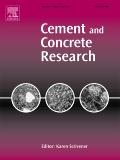
CEMENT AND CONCRETE RESEARCH
Scope & Guideline
Transforming Ideas into Concrete Solutions
Introduction
Aims and Scopes
- Cement Chemistry and Hydration Processes:
Research related to the chemical processes involved in cement hydration, including the formation and evolution of hydration products such as calcium silicate hydrate (C-S-H) and their impact on mechanical properties. - Sustainable Materials and Recycling:
Focus on the development and performance of sustainable cementitious materials utilizing supplementary cementitious materials (SCMs), waste materials, and innovative binders to reduce environmental impact. - Microstructural and Nanostructural Studies:
Investigation of the microstructural and nanostructural characteristics of cement-based materials using advanced imaging techniques and modeling approaches to understand their properties and behaviors. - Durability and Performance Assessment:
Studies assessing the durability of concrete under various environmental conditions, including resistance to chemical attacks, freeze-thaw cycles, and long-term performance evaluations. - Innovative Construction Techniques:
Research on innovative construction methods, including 3D printing and digital fabrication, exploring how these technologies affect material performance and structural integrity. - Modeling and Simulation:
Utilization of computational modeling and simulation techniques to predict the behavior of cementitious materials under various conditions, aiding in the design and optimization of concrete formulations.
Trending and Emerging
- Carbon Capture and Sequestration Technologies:
Research on carbon capture and utilization methods in cement production and concrete applications is gaining traction, emphasizing the role of concrete in climate change mitigation. - Advanced Materials and Nanotechnology:
There is increasing interest in the incorporation of nanomaterials and advanced additives to enhance the performance of cementitious materials, focusing on their mechanical properties and durability. - Digital Fabrication and 3D Printing:
The exploration of digital fabrication techniques, particularly 3D printing of concrete, is trending as researchers investigate its potential for innovative construction methods and material efficiencies. - Self-Healing and Smart Materials:
Research on self-healing concrete and smart materials that can respond to environmental changes or damage is emerging, highlighting the need for sustainable and resilient infrastructure. - Lifecycle Assessment and Sustainable Practices:
Studies focusing on lifecycle assessments of cementitious materials and sustainable construction practices are on the rise, aligning with global sustainability goals.
Declining or Waning
- Traditional Cement Production Techniques:
Research focusing on conventional cement manufacturing processes has decreased as the field shifts towards more sustainable and innovative approaches, such as alternative binders and recycling. - Basic Mechanical Properties:
Studies centered on the basic mechanical properties of concrete without considering advanced factors such as microstructural influences or environmental impacts seem to be less frequent as the field advances. - Non-advanced Testing Methods:
There is a noticeable decline in the use of traditional testing methods for assessing concrete properties, as newer, more sophisticated techniques and technologies are being adopted. - Generalized Models without Specific Applications:
Research that presents generalized models without specific applications or case studies is less sought after as the focus shifts to context-specific and application-oriented studies.
Similar Journals
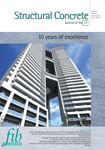
Structural Concrete
Elevating Standards in Civil Engineering ResearchStructural Concrete, published by ERNST & SOHN, is a premier journal dedicated to the field of Civil and Structural Engineering, focusing on innovative research and advancements in concrete materials and technologies. With an impressive impact factor and a consistent ranking in the Q1 category of both Building and Construction and Civil and Structural Engineering, the journal stands as a vital resource for researchers, professionals, and students alike. It is indexed with notable Scopus ranks, underscoring its significance within the academic community. The journal spans a comprehensive scope (from 2001 to the present) that encompasses diverse topics related to the behavior, design, and application of structural concrete. Although not an open access publication, it offers valuable insights and cutting-edge knowledge that contribute to the ongoing evolution of construction practices and materials science. Structural Concrete is an essential platform for sharing pioneering findings and fostering collaboration within this dynamic field.

ACI STRUCTURAL JOURNAL
Pioneering Insights in Concrete and Structural DesignThe ACI Structural Journal, published by the American Concrete Institute, serves as a premier platform for scholarly articles and research findings in the fields of building and construction and civil and structural engineering. With a commitment to advancing concrete technology and its applications, this journal has amassed an impressive reputation, holding a Q2 ranking in both Building and Construction and Civil and Structural Engineering categories as of 2023. The journal’s focus on innovative research and practical applications enables professionals, researchers, and students to stay at the forefront of industry developments. Although it does not offer open access, the content bears significant impact, ensuring that readers engage with high-quality research. As the journal converges its years of publication from 1987 to 2024, it continues to enrich the academic and professional discussions surrounding structural engineering and concrete science.
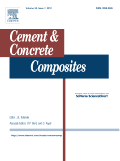
CEMENT & CONCRETE COMPOSITES
Transforming Research into Real-World Building SolutionsCEMENT & CONCRETE COMPOSITES, published by Elsevier Science Ltd, is a prestigious academic journal that has established itself as a leading source of valuable research in the fields of Building and Construction and Materials Science. With an impressive impact factor and consistently ranked in the Q1 category for both disciplines, this journal provides a critical platform for the dissemination of innovative findings and theoretical advancements concerning cement-based materials. Spanning a comprehensive timeframe from 1989 to 2024, it emphasizes the importance of sustainable building practices and material performance, engaging a diverse readership of researchers, industry professionals, and students. The journal encourages open collaboration and knowledge exchange, fostering an environment where cutting-edge research can thrive and contribute to the advancement of construction materials technology.

MATERIALS AND STRUCTURES
Elevating Knowledge in Materials Science and ConstructionMATERIALS AND STRUCTURES, published by SPRINGER, is a prestigious peer-reviewed journal dedicated to advancing the fields of building and construction, civil and structural engineering, and materials science. With an impressive impact factor and a notable Q1 ranking across multiple categories in the 2023 Journal Citation Reports, including Mechanics of Materials, this journal stands as a vital resource for researchers and professionals seeking to disseminate and access high-quality research. Established in 1985, it has continually evolved, showcasing revolutionary research and emerging technologies in material engineering. The journal provides a platform for innovative ideas and methodologies, contributing significantly to the body of knowledge essential for the advancement of sustainable construction practices. Although it does not currently offer Open Access options, the rigorous peer review process ensures the integrity and relevance of its publications, cementing its role as a leading journal in its field. Researchers, industry experts, and students alike will find invaluable insights within its pages, making MATERIALS AND STRUCTURES an essential read for anyone involved in engineering and materials research.
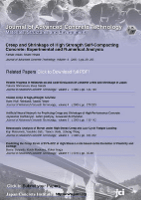
Journal of Advanced Concrete Technology
Transforming Construction Through Advanced Concrete SolutionsThe Journal of Advanced Concrete Technology, published by the JAPAN CONCRETE INST, is a leading academic journal dedicated to the specialized field of concrete technology, offering invaluable insights and research findings that push the boundaries of knowledge in construction materials and engineering. With an ISSN of 1346-8014 and an E-ISSN of 1347-3913, this journal has been an influential platform since its inception in 2003, converging its focus through to 2024. The journal holds a commendable position within the Q2 category in both Building and Construction and Materials Science for 2023 and ranks in the 63rd and 47th percentiles, respectively, reflecting its significant contribution to these disciplines. Accessible only through traditional subscription models, it is a critical resource for researchers, professionals, and students looking to explore contemporary advancements in concrete applications and innovations. Engaging with this journal not only enables a deeper understanding of materials science but also fosters collaboration and dialogue within the global engineering community, making it an essential read for anyone invested in the future of construction technology.
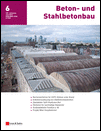
Beton- und Stahlbetonbau
Shaping the Future of Concrete ConstructionBeton- und Stahlbetonbau is a renowned journal published by ERNST & SOHN, dedicated to advancing knowledge in the field of building and construction, particularly focusing on concrete and reinforced concrete engineering. Established in 1969, this peer-reviewed publication encompasses a broad range of topics, including innovative construction methods, structural analysis, and material performance, making it a crucial resource for researchers, scholars, and industry professionals alike. With an impact factor ranking it within the Q2 category in the Building and Construction field, this journal holds significant influence, evidenced by its Scopus rank of #112/223. Importantly, Beton- und Stahlbetonbau is committed to providing high-quality content that meets the academic rigor demanded by its audience, ensuring that readers remain at the forefront of technological advancements and research in concrete construction.

Case Studies in Construction Materials
Championing Open Access to Material Science KnowledgeCase Studies in Construction Materials, an esteemed journal published by Elsevier, provides a vital platform for the dissemination of scholarly research in the field of materials science, focusing particularly on innovations and advancements in construction materials. With its Q1 ranking in the 2023 Scopus category of Materials Science (Miscellaneous), the journal stands out for its high-impact contributions and commitment to enhancing industry practices. Open Access since 2014, Case Studies in Construction Materials promotes wide accessibility and engagement, encouraging collaborations among researchers, professionals, and students globally. Whether delving into innovative methodologies, sustainability in construction materials, or case studies that exemplify best practices, this journal is crucial for those seeking to advance the science and application of construction materials. Located in Amsterdam, Netherlands, its robust publication history from 2014 to 2024 ensures it remains a leading resource for contemporary research and academic exploration.

CERAMICS-SILIKATY
Connecting Knowledge in Ceramics and Materials ScienceCERAMICS-SILIKATY is a distinguished open-access journal published by the University of Chemistry and Technology, Prague, specializing in the fields of Ceramics and Composites, Analytical Chemistry, Chemical Engineering, and Materials Chemistry. Since its inception in 1991, this journal has played a pivotal role in disseminating cutting-edge research and innovative findings in the study of ceramics, emphasizing both fundamental and applied aspects. With a commitment to accessibility since 2000, CERAMICS-SILIKATY promotes knowledge sharing among researchers, professionals, and students globally. The journal's current standing in the Q3 Quartile across several categories highlights its significant contributions and relevance in the academic community. As a hub for interdisciplinary research, the journal invites submissions that advanced our understanding of ceramic materials and their applications, positioning itself as an essential resource for those engaged in the forefront of materials science.

Bauingenieur
Transforming Ideas into Engineering SolutionsBauingenieur, an established journal in the field of Building and Construction and Civil and Structural Engineering, has been a significant platform for scholarly discourse since its inception in 1969. Published by VDI FACHMEDIEN GMBH & CO KG UNTERNEHMEN FACHINFORMATIONEN in Germany, this journal, available in both print (ISSN: 0005-6650) and electronic formats (E-ISSN: 1436-4867), serves as a vital resource for researchers, professionals, and students dedicated to advancing knowledge and practice in engineering. Although currently without open access options, Bauingenieur aspires to contribute to the academic community by presenting cutting-edge research, case studies, and technical reviews within the realms of construction and civil engineering. As evidenced by its categorizations in the 2023 Scopus rankings, where it has a Q4 designation in both relevant categories, it provides an essential resource for understanding current trends and challenges in the industry. The journal welcomes contributions that push the boundaries of knowledge and foster innovative solutions in the built environment.

Proceedings of the Institution of Civil Engineers-Construction Materials
Pioneering Insights for Structural Engineering ExcellenceProceedings of the Institution of Civil Engineers - Construction Materials is a leading journal dedicated to advancing the field of civil engineering, with a specific focus on construction materials. Published by Emerald Group Publishing Ltd in the United Kingdom, this journal serves as a critical platform for disseminating innovative research and practical applications in material science and structural engineering. With an ISSN of 1747-650X and E-ISSN 1747-6518, it spans an impressive timeline from 2006 to 2024, encapsulating pivotal studies that influence contemporary engineering practices. As a Q3 journal in the categories of Civil and Structural Engineering, Materials Science, and Mechanics of Materials, it reflects a solid academic standing, holding ranks of 152 out of 379 in Civil Engineering and 171 out of 398 in Mechanics of Materials, positioning itself within the esteemed scholarly community. The journal's objectives include promoting innovative material applications and fostering collaboration among professionals and researchers in the field. Although it does not currently offer open access, its comprehensive insights and findings are invaluable for researchers, professionals, and students striving for excellence in civil engineering and materials science.